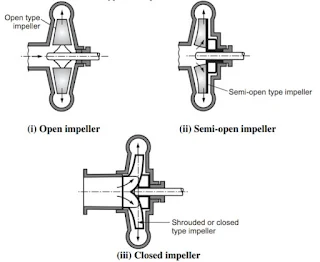Centrifugal pumps are widely used in various industries for transporting fluids. They are highly efficient, low-maintenance, and easy to operate. In this article, we will discuss the working principle of centrifugal pumps, the different parts of a centrifugal pump, the various types of centrifugal pumps, and their applications.
Centrifugal Pump Working Principle
The working principle of a centrifugal pump is based on the principle of centrifugal force. Centrifugal force is the force that is generated when an object rotates around a central point. In a centrifugal pump, the impeller rotates at high speed, generating centrifugal force that pushes the fluid outwards. As the fluid moves outwards, a low-pressure region is created at the center of the impeller. This low-pressure region draws more fluid into the pump through the suction pipe.
The fluid then enters the impeller and is accelerated by the rotating blades. As the fluid moves through the impeller, it gains kinetic energy and is forced outwards by the centrifugal force. The fluid then flows through the casing and into the discharge pipe, where it is delivered to the desired location.
Before we dive into the details, let's take a look at the centrifugal pump diagram to understand the different parts of a centrifugal pump and their functions. The following centrifugal pump diagram illustrates the key components of a centrifugal pump.
Centrifugal Pump Diagram
As shown in the centrifugal pump diagram, the key components of a centrifugal pump include:
Impeller: The impeller is a rotating component of the centrifugal pump that is responsible for generating centrifugal force. The impeller has curved blades that push the fluid outwards, creating a low-pressure region at the center.
Casing: The casing is the outer shell of the centrifugal pump that encloses the impeller. The casing is designed to ensure that the fluid is directed towards the outlet of the pump.
Suction pipe: The suction pipe is a pipe that connects the inlet of the centrifugal pump to the fluid source. The fluid is drawn into the pump through the suction pipe.
Discharge pipe: The discharge pipe is a pipe that connects the outlet of the centrifugal pump to the desired location where the fluid needs to be delivered.
Shaft: The shaft is a rotating component of the centrifugal pump that connects the impeller to the motor. The shaft is supported by bearings that prevent it from wobbling.
Motor: The motor is an electrical component that provides the power to rotate the impeller. The motor is typically located outside the casing to prevent it from getting wet.
As mentioned earlier, the key components of a centrifugal pump include the impeller, casing, suction pipe, discharge pipe, shaft, and motor. Let's take a closer look at each of these components.
Impeller: The impeller is the most important component of a centrifugal pump. It is responsible for generating centrifugal force and accelerating the fluid. Impellers can be classified into two types - open and closed. Open impellers have vanes that are not enclosed, while closed impellers have vanes that are enclosed in a casing.
Casing: The casing is the outer shell of the centrifugal pump that encloses the impeller. The casing is designed to ensure that the fluid is directed towards the outlet of the pump. The casing can be split or solid. Split casing pumps are easy to maintain, while solid casing pumps are more robust.
Suction pipe: The suction pipe is a pipe that connects the inlet of the centrifugal pump to the fluid source. It is typically made of steel or PVC and is used to draw the fluid into the pump. The size of the suction pipe is critical in determining the flow rate of the pump.
Discharge pipe: The discharge pipe is a pipe that connects the outlet of the centrifugal pump to the desired location where the fluid needs to be delivered. It is also typically made of steel or PVC and the size of the discharge pipe is important in determining the pressure of the fluid at the delivery point.



